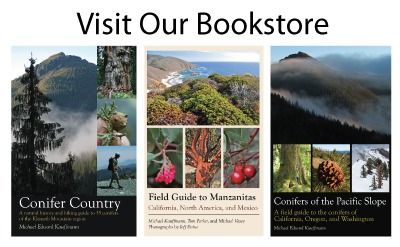I thought it was just the Klamath River?
or…
Are they in Klamath Falls?
These are common questions we hear and we understand the confusion. The name “Klamath Mountains” may not be part of your everyday speak, but if you love all those spectacular mountains and rivers between Ashland and Crescent City, Redding and Eureka, Mount Shasta and Brookings, then it turns out you LOVE the The Klamath Mountains.
The Klamath Mountains are one of the Earth’s most important temperate mountain ranges. These mountains are a hotspot for biodiversity due to the complex interactions, across millions of years, of biotic and abiotic factors. The area has a central location and continuity with other mountain ranges along the Pacific Slope of western North America. Across this landscape, a mosaic of habitats mix at a crossroads of five biotic regions including the Cascades, Coast Ranges, Great Basin, Central Valley, and Sierra Nevada. Many major rivers of the region also connect the ranges aquatic ecosystems to the productive Pacific Ocean.
Within the geologic boundaries defining these complex habitat mosaics, there are ~3,500 taxa (species, subspecies, and varieties) of vascular plants and up to 38 species of conifers, depending on how one delineates the region. This conifer diversity is unrivaled in any other temperate mountain range on Earth. In addition to plants, the region holds exceptional diversity for a variety of invertebrates including snails, butterflies, and bees as well as a wealth of vertebrate species including many endemic amphibians and a deep evolutionary history among anadromous fishes that have adapted within region over eons. .
The Klamath Mountains: A Natural History by Backcountry Press tells the first comprehensive story about this little-known mountain range. Starting with the First People of the region, the book weaves together never-before told stories of how geology, climate, fire, and water provide the basis for the biological abundance of all living things across northwest California and southwest Oregon.





Can’t wait for the winter webinar series on the Klamath Mountains Natural History or the book! Truly, something to look forward to, Thank you Backcountry Press & MK!